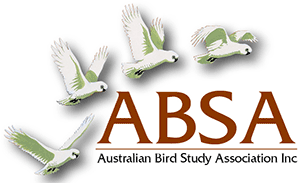WHY DO FLAME ROBINS Petroica phoenicea MIGRATE? A COMPARISON BETWEEN THE SOCIAL AND FEEDING ECOLOGIES OF THE FLAME ROBIN AND SCARLET ROBIN P. multicolor
| Posted: |
12/08/2021 |
| Author(s): |
Doug Robinson |
Comparisons between the ecology of Flame and Scarlet Robins at a sympatric breeding site
suggested that Flame Robins migrated during the winter months because of a decline in the availability
of their major prey. During the nine months that Flame Robins were present at the breeding site, they
foraged for flying insects twice as often as did Scarlet Robins. Scarlet Robins foraged more often for
ground-dwelling prey. Flying insects are a very seasonal food resource, present mostly during the
warmer months. Ground-dwelling arthropods remain relatively more common in winter. Thus, Flame
Robins migrated from their breeding grounds once food abundance decreased and competition for
remaining prey increased in the autumn months. Scarlet Robins were able to find sufficient food to
remain at their breeding grounds throughout the year. Severe competition for territories in breeding
habitat may have been a further selection pressure on Scarlet Robins to remain at their breeding
grounds throughout the year, since territory turnover was low.
Morphological comparisons indicated that Flame Robins showed long-term adaptations to their
winter environment and winter feeding behaviour (hop-gleaning on the ground). Such adaptations
imply that migration may be an ancestral trait within this species rather than a recent event, and that
Flame Robins have long moved between wintering and breeding grounds to exploit seasonally
abundant supplies of food.
>> Download Abstract |
File Size: 298KB
>> Download Complete PDF | File Size: 2MB
